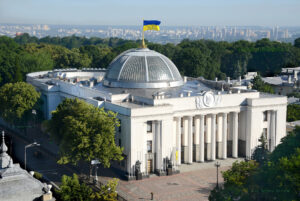
Norway allocates another €5.6 million to support nuclear safety and decommissioning activities
With the ratification of the framework agreement of the International Cooperation Account for Chornobyl (ICA) by the Ukrainian Parliament, the international community and Ukraine are ready to enter a new stage of cooperation on long-term nuclear safety and decommissioning, with a special focus on the Chornobyl NPP. In June 2024, the Rada approved the relevant law, which paves the way for a wider range of nuclear safety activities to be managed by the RSC.
To reaffirm its unwavering support for international efforts for decommissioning and nuclear remediation in Ukraine, at a recent meeting of the PFDR Donor Assembly, Norway announced an additional €5.6 million contribution to the PFDR.
Donors also agreed on the next tranche of funding for projects to improve the safety of spent fuel storage and optimize liquid radioactive waste management at the Chornobyl NPP.
Balthasar Lindauer, Director of the EBRD Nuclear Safety Department, said: “Russia’s military occupation of the Chornobyl Exclusion Zone (ChEZ) in March 2022 has not only damaged the infrastructure at the site, but also left a challenging operational legacy for one of the most vulnerable nuclear power plants in the world. The EBRD has a long-standing commitment to supporting the decommissioning and safety of Chornobyl, and we are determined to ensure that the significant progress made over the years through international cooperation is not lost. The ratification of the framework agreement, additional donor support and commitments to a new tranche of projects are an important statement of this renewed international support for safety at Chornobyl.”
The RMCS was established in November 2020 by the EBRD at the request of the Government of Ukraine. It was established as a multilateral fund to support the development of a comprehensive plan for Chornobyl. After the occupation of the ChEZ at the beginning of Russia’s full-scale war against Ukraine, the RMSF’s scope of tasks was expanded to support the restoration of safety in the ChEZ, as well as broader nuclear safety measures throughout Ukraine.
AGREEMENT, CHORNOBYL, international cooperation, VERKHOVNA RADA
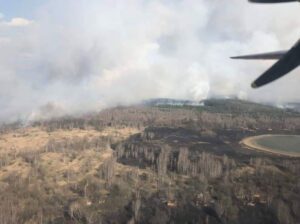
Fires near the Chornobyl nuclear power plant cannot be completely extinguished, and some increase in cesium concentrations has been recorded in Kyiv and west of Chornobyl, the International Nuclear Energy Agency (IAEA) said, citing the State Nuclear Regulatory Inspectorate of Ukraine.
“Ukraine’s regulatory authority informed the IAEA that firefighters were trying to extinguish wildfires near the Chornobyl NPP, an area which has seen such outbreaks also in previous years. The fire brigade from the town of Chornobyl has extinguished four fires, but there are still ongoing fires,” the IAEA said on its website on Wednesday in the evening.
According to the release, the local fire station does not currently have access to the electricity grid, the regulator said. In the meantime, the station is relying on diesel generators for power, for which fuel is required, it added.
The IAEA also draws attention to the fact that, in the Exclusion Zone, the regulator said radiation measurements are not currently being performed. It said slight increases in caesium air concentrations had been detected in Kyiv and at two NPP sites west of Chornobyl, but the regulator told the IAEA that they did not pose significant radiological concerns.
At the same time, in a video message posted on the IAEA website on Wednesday, IAEA Director General Rafael Mariano Grossi called the situation when major nuclear facilities operate in an armed conflict zone “dramatic and unique,” and noted that the situation remains distressing, and “the need to prevent a nuclear accident becomes more pressing with each day that passes.”
According to him, “intensive consultations have been ongoing for many days now, but a positive outcome still eludes us.”
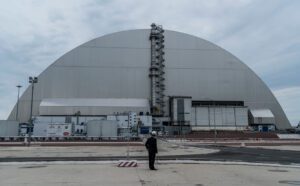
Power supply has been restored to the Chornobyl Nuclear Power Plant (NPP) site after repeated damage from hostilities, the International Atomic Energy Agency (IAEA) said.
“Ukraine has informed the IAEA that external power had again today been restored to the Chornobyl Nuclear Power Plant after line had been again damaged by the occupying forces,” the IAEA said in a tweet on the night of Monday to Tuesday.
Other details are not reported.
The IAEA website notes that the “regulatory authority” informed the agency about the resumption of power supply to the Chornobyl nuclear power plant on the afternoon of March 14.
“The regulatory authority told the IAEA that at 13:10 CET external power had again been restored and that staff at the Chornobyl NPP had restarted operations to reconnect the NPP to the grid,” the agency said.
The city council of Slavutych, a satellite city of the Chornobyl nuclear power plant, on its Facebook late on Monday evening announced that the city’s power supply had been resumed and the connection of residential buildings would be carried out gradually.
As reported with reference to NPC Ukrenergo, on March 14, Russian invaders again damaged the high-voltage line supplying power to the Chornobyl nuclear power plant and Slavutych, after the company had repaired it.
The NPP site and Slavutych were de-energized on March 9 due to shelling of energy infrastructure by Russian troops.
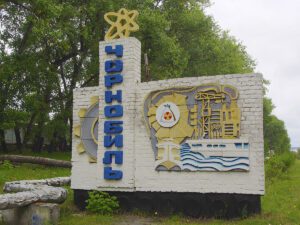
Some 32,000 tourists have visited the Chornobyl exclusion zone since the beginning of the year, assistant director of the state enterprise Center for Organizational, Technical and Information Support of the Exclusion Zone Management (COTIS) Kyrylo Harnyk has said.
According to him, the data are relevant for August 11. Earlier, in 2019, it was planned to reach 1 million tourists a year, but in 2020 the tourist flow has decreased significantly.
“We have already managed to get better results than in 2018, when we received 36,000 tourists for the whole year, but we are unlikely to achieve the results of 2019, with 124,000 tourists,” Harnyk said during a roundtable talk on the preservation of Prypiat and Duga facilities in Chornobyl on Thursday.
As reported, in February 2021, the Ministry of Culture and Information Policy of Ukraine, the Ministry of Environmental Protection and Natural Resources of Ukraine, the State Agency for Tourism Development and the State Agency of Ukraine on Exclusion Zone Management signed a memorandum on the promotion of visits to the territory of the exclusion zone of the Chornobyl nuclear power plant.
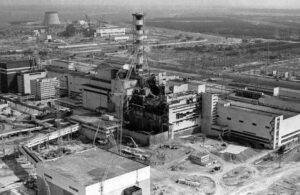
Western countries will continue to support Ukraine and will continue to provide their assistance to our country to quickly overcome the consequences of the Chornobyl disaster. The corresponding statement was made by the Ambassadors of Germany and Great Britain in Ukraine, as well as the Deputy Head of the U.S. Embassy in Ukraine during an online discussion of Kyiv Security Forum, organized by Arseniy Yatsenyuk’s Open Ukraine Foundation, the forum’s press service reported on Monday.
Thus, Ambassador Extraordinary and Plenipotentiary of Germany to Ukraine Anka Feldhusen noted that Germany continues to provide assistance to Ukraine even 35 years after the accident at the Chornobyl nuclear power plant.
She also stressed that the most famous international project on safety at the Chornobyl nuclear power plant is the construction of a new safe shelter over the old sarcophagus of the fourth power unit.
“This unique masterpiece of modern technology should protect the environment from the radioactive remnants of a destroyed reactor for at least a hundred years. Germany has directly contributed about EUR 100 million to the project, the total cost of which is more than EUR 2 billion. All these assistance measures can only try to slightly reduce the harm caused and alleviate the terrible suffering,” said Feldhusen.
In turn, British Ambassador Extraordinary and Plenipotentiary to Ukraine Melinda Simmons said that it is impossible to fully assess all the losses and negative consequences for humanity that were caused by the Chornobyl accident even 35 years after the accident.
The diplomat noted that today British engineers are involved in projects that guarantee the safety and stability of the Chornobyl zone, including a new safe shelter.
Simmons said that the total cost of the shelter is EUR 2.1 billion which is the largest international nuclear safety cooperation project supported by 40 countries, including Britain. This example of international cooperation in the field of nuclear safety shows that we have come a long way since 1986, and this gives us the hope for the future that such a tragedy will never happen again, said Simmons.
The United States also reminded of its support for Ukraine. Thus, deputy head of the U.S. Embassy in Ukraine, Joseph Pennington, said that the transformation of Chornobyl remains a long-term challenge, but Ukraine will not have to cope with it on its own.
He stressed that the United States, along with the rest of the international community, will continue to support Ukraine to ensure the future energy and nuclear security of not only this place, but Ukraine as a whole.
The diplomat noted that no other nuclear accident in history has been more serious in terms of costs and casualties like the Chornobyl accident and clarified that thanks to cooperation between Ukraine and the United States, significant success has been achieved in overcoming the consequences of the disaster.
According to Pennington, the United States is proud to become the largest donor to the New Safe Shelter project, which covers the site of the disaster of the reactor of the fourth Chornobyl power unit.
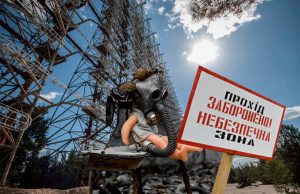
The State Agency of Ukraine for the Management of the Exclusion Zone and the mobile operator Vodafone Ukraine are working on a pilot project for the construction of a fire safety monitoring system on the territory of the Exclusion Zone in Chornobyl.
According to the message of the Ministry of Environment Protection and Natural Resources of Ukraine posted on its website on Monday, the first step of the project was to expand the coverage of Chornobyl with high-speed mobile Internet 4G in the 900 MHz range and install a base station there.
The next stage will be testing the operation of thermal imagers, which will be installed at a height and cover a significant area. The new system will quickly identify the place of fire using video cameras and thermal imagers.
“Modern technologies open up ample opportunities for instant detection of fires in forest areas. Thanks to cooperation with Vodafone Ukraine, NB-IoT technology will start operating in Chornobyl, which is built on the concept of the ‘Internet of Things’ and allows safe and fast transfer of information between objects. And it, in turn, makes it possible to instantly respond to fire situations and localize them,” Minister of Environmental Protection and Natural Resources of Ukraine Roman Abramovsky is quoted as saying.
He also stressed that effective prevention of fires directly depends on technical equipment and the use of smart technologies.
At the same time, Abramovsky noted that the expansion of mobile coverage will contribute to the development of investment and tourist attractiveness of the Chornobyl zone.
“This is the first such solution in Ukraine, which Vodafone Ukraine develops and implements exclusively for the Chornobyl exclusion zone. In the future, it can be scaled to other fire hazardous areas of Ukraine,” said Andriy Bolshakov, deputy director general of Vodafone Ukraine.
According to Vodafone Ukraine, NB-IoT technology provides a high security standard – encryption and authentication based on a SIM card, which are not available in other technologies. In addition, it optimizes power consumption, extending the battery life of the components up to 10 years. Moreover, the capacity of such a network is significantly higher than that of a voice network.
As reported, high-speed mobile Internet from Vodafone Ukraine appeared in the Chornobyl exclusion zone in 2016 after the launch of the base station of the 3G network in Prypyat. The rollout of the operator’s 4G network began in the Chornobyl exclusion zone in November 2018.